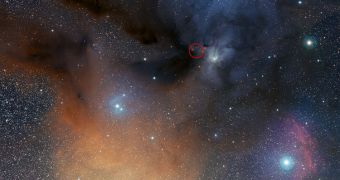In a paper published in the latest issue of the esteemed Astrophysical Journal, astronomers detail a new study showing that more hydrogen gas exists in the Universe than initial calculations suggested. The research focused on studying hydrogen masses in galaxies close to the Milky Way.
The finding is interesting because scientists were expecting to find extra material – if any – in the form of dark matter, not baryonic (normal) matter. The research was led by astronomers at the Commonwealth Scientific and Industrial Research Organization (CSIRO), in Australia.
The team was coordinated by expert Dr. Robert Braun. He says that the discovery makes it easier to explain why galaxies produce, on average, fewer stars nowadays than they did in the very distant past.
This chemical is believed to be the first structured organization of matter ever to occur in the Universe following the Big Bang. Atomic hydrogen gas made up the basic constituent of the very first stars and galaxies, and provides fuel for new celestial fireballs even today.
Dr. Braun, the chief scientist at the CSIRO Astronomy and Space Science, in Sidney, Australia, says that the galaxies his team analyzed in the new research contain as much as 34 percent more hydrogen than previous measurements indicated.
Investigators also found significant differences in the way the gas is distributed now, as opposed to the patterns in which it was stirred billions of years ago. The difference is particularly striking at the outskirts of galaxies, the Australian team adds, quoted by Astrobiology Magazine.
“This means that it’s much harder for galaxies to pull the gas in and form new stars. It’s why stars are forming 20 times more slowly now than in the past,” Dr. Braun says. He is quick to point out that the discovery does not negate the theoretical models suggesting the existence of dark matter.
“Even though there’s more atomic hydrogen than we thought, it’s not a big enough percentage to solve the Dark Matter problem. If what we are missing had the weight of a large kangaroo, what we have found would have the weight of a small echidna,” the expert adds.
This research provides an interesting new perspective to consider in our quest to understand how galaxies evolve over billions of years. Figuring this out will give us more clues as to the ultimate fate of the Universe.

 14 DAY TRIAL //
14 DAY TRIAL //